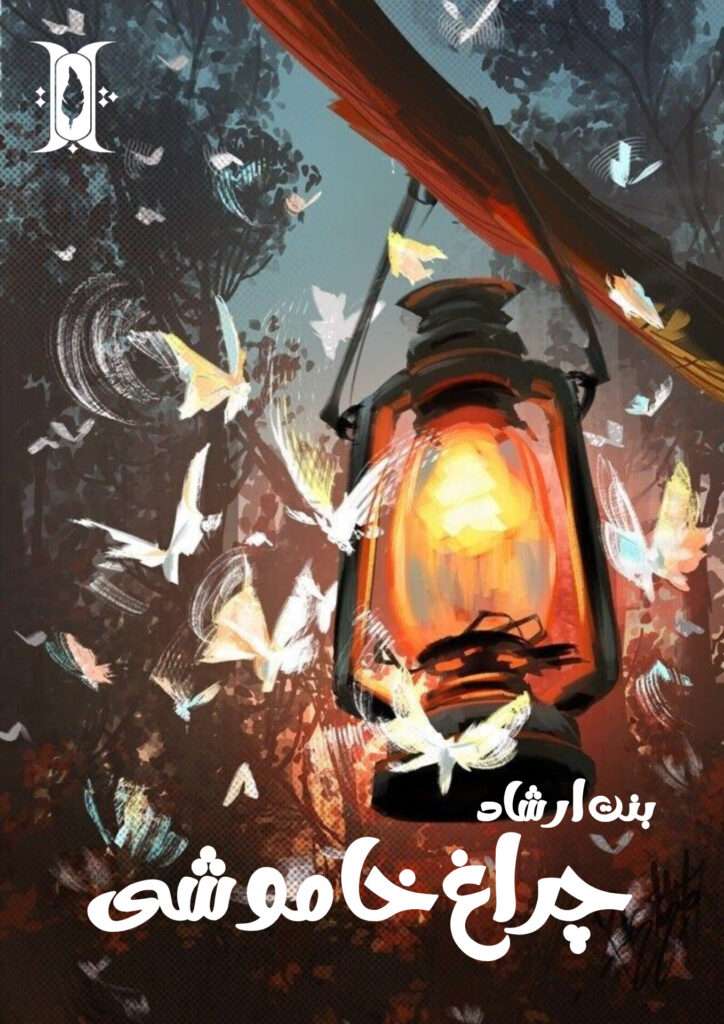یہ ایک علامتی عنوان ہے جو اُس خاموش جدوجہد، اندرونی روشنی اور بےآواز بغاوت کو بیان کرتا ہے جو سلمیٰ جیسے کرداروں کے دل میں جلتی ہے۔ “چراغ” روشنی، امید اور بصیرت کی علامت ہے، جب کہ “خاموشی” اس سماج کی عکاس ہے جو بیٹی کے خوابوں پر لب سی لیتا ہے۔
“چراغِ خاموشی” ایک ایسی بیٹی کی کہانی ہے جس کا بچپن خاموشیوں میں ڈوبا، جس کے الفاظ اکثر رد کر دیے گئے، لیکن اس کی آنکھوں میں جلنے والی روشنی نے آخرکار اس تاریک معاشرتی فضا کو چیر دیا۔ وہ بولی نہیں، لیکن اس کی کامیابی خود ایک صدا بن گئی۔ یہ افسانہ اُس جذبے کا عکس ہے جو رکاوٹوں کے بیچ بھی جلتا رہا — مدھم سہی، مگر بجھا نہیں۔
یہ عنوان ہر اُس لڑکی کے دل کو چھوئے گا جو بول نہیں سکتی، مگر خواب دیکھتی ہے، جو بظاہر خاموش ہے، لیکن اندر ایک پورا آسمان سجا بیٹھے ہے۔
Chirag-e-Khamoshi is an Urdu afsana by Bint-e-Irshad, a poignant blend of social commentary and subtle romance. The title itself is a powerful metaphor—Chirag (lamp) representing inner light, hope, and resilience, while Khamoshi (silence) reflects a society that often suppresses the voices of its daughters. This afsana delves deep into the silent rebellion, unspoken dreams, and unwavering strength of a girl named Salma, whose entire existence becomes a protest wrapped in grace.
Salma is not your typical protagonist. She is quiet, composed, and conditioned by years of cultural conditioning that taught her silence was dignity, and obedience was virtue. Her childhood is spent within four walls echoing with unasked questions and dreams buried beneath the weight of tradition. But even in that silence, a light flickers—a chirag refusing to extinguish. Her world may not echo with her words, but her eyes carry volumes, her actions resonate louder than noise, and her silence becomes a language of resistance.
In a mashriqi society where daughters are often told what to become rather than asked what they want to be, Chirag-e-Khamoshi speaks for every girl who has ever felt invisible. It is a tale of unsaid emotions, generational silence, and the quiet courage it takes to dream while being told not to. The story doesn’t glorify rebellion for the sake of rebellion—it highlights the quiet but unbreakable determination that slowly chips away at societal walls.
What makes this afsana powerful is its subtle layering of romance—not just romantic love, but the romance of self-belief, the love for one’s dreams, and the journey from suppression to self-expression. There is no dramatic declaration, no revolution on the streets—only a girl who refuses to give up on the light inside her. And that alone is her triumph.
Eventually, Salma’s silence becomes her strength. Her success speaks in the spaces where she was once silenced. She doesn’t scream her victory; she lives it. This transformation from quiet endurance to silent empowerment forms the emotional heart of Chirag-e-Khamoshi. Her victory is not loud—it is luminous.
This story resonates with every khamosh larki who has a dil bhara asmano se, every girl who stays silent but dreams in colors no one can see. It’s for those who live under the weight of expectations yet carry universes within them. Through symbolic storytelling and deeply emotional prose, Bint-e-Irshad captures the jazba, pain, and hope that shape the journey of countless girls.
Chirag-e-Khamoshi is more than an afsana—it is a movement in whispers, a voice for the voiceless, a tribute to the daughters of silence whose roshni continues to burn despite the darkness around them.

